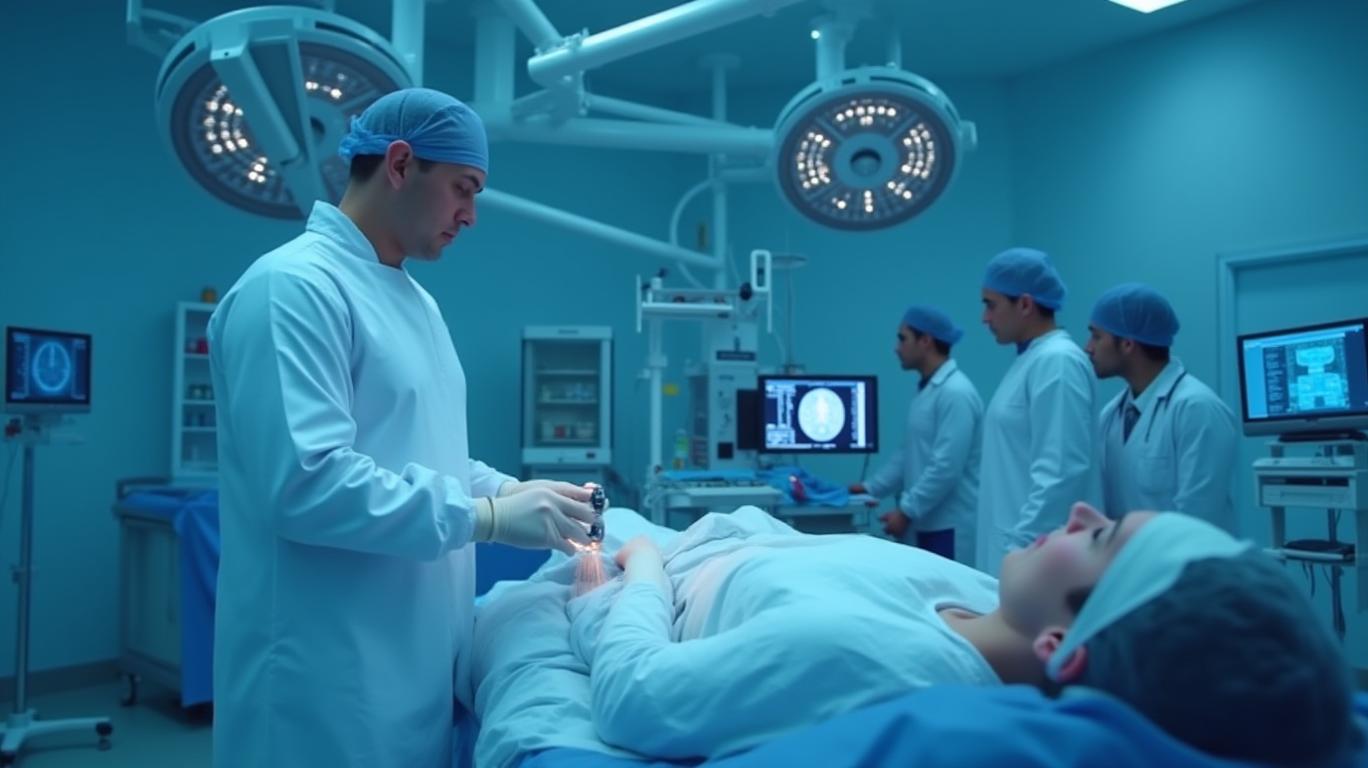NeuroPace's NAUTILUS Subgroup Data: A Strategic Play for FDA Approval and Market Dominance in Epilepsy
The epilepsy treatment landscape is on the cusp of a seismic shift.
(NASDAQ: NPAC), a leader in neuromodulation therapies, has unveiled pivotal findings from its NAUTILUS study—a trial that could redefine how drug-resistant generalized epilepsy is managed. While the study's headline results fell short of statistical significance for the entire population, a buried gem in the subgroup analysis suggests a clear path to FDA approval, strategic market expansion, and long-term dominance. Here's why investors should pay attention now.
The Subgroup Breakthrough: Precision Medicine in Action
The NAUTILUS trial tested the RNS System—a brain-responsive neurostimulation device—against a sham group in patients with drug-resistant idiopathic generalized epilepsy (IGE). While the overall population missed the primary endpoint (prolonging time to a second generalized tonic-clonic seizure), a subgroup of patients with lower baseline seizure frequencies achieved statistically significant results. This subgroup, representing the majority of trial participants, saw a meaningful reduction in seizures, aligning with the device's mechanism of action: personalized, real-time seizure interruption.
Why does this matter? The FDA increasingly prioritizes subgroup analyses when they address unmet medical needs in well-defined populations. NeuroPace's subgroup—patients with fewer seizures at baseline—represents a large, underserved cohort in IGE. By targeting this group, the company can secure a narrow FDA indication first, then expand into broader populations as post-marketing data matures. This strategy mirrors recent approvals like Biogen's spinal muscular atrophy treatment, which gained traction through precise subgroup targeting.
The Path to FDA Approval: Pre-Specification and Clinical Relevance
The FDA's 2024-2025 guidance emphasizes pre-specified subgroup analyses to avoid post-hoc “fishing expeditions.” While the NAUTILUS protocol's subgroup focus isn't explicitly detailed in the public domain, NeuroPace's alignment with FDA Breakthrough Designation criteria (granted in 2021) suggests rigorous planning. Key advantages here include:
- Safety consistency: The RNS System maintained its proven safety profile, with low device-related adverse events.
- Long-term efficacy: Even in the full population, seizure reduction and responder rates improved over 12–24 months, indicating the system's adaptability over time.
- Clinical relevance: The subgroup's results address a critical gap—patients with less severe but still debilitating IGE, who lack effective therapies.
NeuroPace is now positioned to submit a targeted indication package focused on the subgroup, supported by median seizure reduction data and responder metrics. The FDA's recent approvals of therapies like STK-001 (Dravet syndrome) and CNM-Au8 (ALS) underscore its openness to subgroup-driven pathways, especially for rare or severe conditions.
Market Expansion: A $4 Billion Opportunity Awaits
The epilepsy market is projected to exceed $4 billion by 2030, driven by unmet needs in drug-resistant cases. IGE alone affects ~30% of epilepsy patients, with limited treatment options beyond inadequate seizure medications. NeuroPace's RNS System, already approved for focal epilepsy, could carve out a $1.2–1.5 billion niche in IGE if the NAUTILUS subgroup data translates to approval.
Crucially, the RNS System's long-term durability (demonstrated in the trial's second year) reduces the need for repeated interventions, offering a cost-effective solution for payers. This aligns with healthcare's shift toward value-based care, where devices with sustained efficacy gain favor over short-term drugs.
Risks and Catalysts to Monitor
- FDA timeline: NeuroPace's submission timing and FDA's response to subgroup data are critical. A 2025 PMA filing could lead to a 2026 approval, assuming no major hurdles.
- Competitor moves: LivaNova's VNS therapy and Eisai's perampanel compete in epilepsy, but no neuromodulation device targets IGE as precisely as RNS.
- Real-world data: Post-marketing studies will validate subgroup findings in broader populations, opening doors to expanded indications.
Why Invest Now?
NeuroPace's NAUTILUS results are a strategic masterstroke. By narrowing its focus to a high-impact subgroup, the company avoids the pitfalls of chasing broad approvals and instead builds a defensible, evidence-backed position. The RNS System's proven safety, the FDA's pro-innovation stance for breakthrough devices, and the vast epilepsy market make this a rare high-reward, asymmetric opportunity.
For investors, the catalysts are clear: FDA approval in 2026 could trigger a valuation rerating, with NPAC's stock currently undervalued relative to its epilepsy addressable market. This is a buy now, hold forever story—provided NeuroPace executes on its regulatory and commercial roadmap.
The clock is ticking. The subgroup data is there. The path to approval is laid out. Seize this moment before the market catches up.
Action Item: NeuroPace (NPAC) is primed for a breakout. Monitor FDA interactions and prepare to act swiftly on positive regulatory news. This is a 2025–2026 growth story with multiyear legs.

Comments
No comments yet